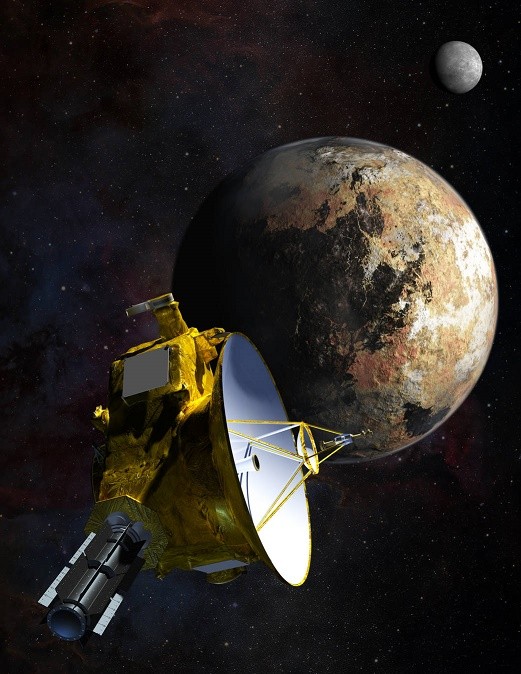NASA's New Horizons is transmitting the most remarkable photos of Pluto and its moon Charon even if they are fuzzy and just a handful of pixels which offer the first unprecedented views of the unexplored icy world, revealing the two distinct colors of dwarf planet and its moon.
According to New Horizons' camera manufacturer Ball Aerospace's manager, Lisa Hardaway, scientists are expecting that Pluto and its moon Charon were supposed to be made from the same material but visually they are not.
Before the scientists obtained images from Pluto and Charon, they already knew that there would be some differences in color since scientists believe that Charon was a remnant from space debris from an object that smashed into Pluto that is also similar to Earth's moon.
Also similar to Earth's moon, Charon has one side of its face that is permanently locked to its parent body, Pluto, which is an event more commonly known as tidal locking. However, Charon is not observed on Pluto rising or setting as it is permanently pinned on Pluto's horizon on the same patch of the sky.
Similar to gas giant neighbor Uranus, Pluto and Charon rotate the sun when they are tipped on their sides that could also show evidence of a past, destructive impact. New Horizons will also finally be able to learn if Pluto's atmosphere is also getting sucked by Charon.
According to New Horizons lead researcher Alan Stern of the Southwest Research Institute in Colorado computer models show that Pluto's atmosphere has escaping particles that also pass Charon's orbit.
Stern adds that Charon's gravitational forces can pull some of the atmospheric gas into orbit near Charon or around itself that can lead to the creation of a second atmosphere. This marks the first time in the solar system that two bodies apparently share the same atmosphere which is quite unique to the Pluto system.
Latest series of images from the spacecraft also reveals a distinct and dark area located in Charon's north polar region. Both Pluto and Charon possess dark and light patches on their surfaces which is evidence of landscape diversity.
After almost ten years, New Horizons will now be on its closest approach to Pluto on July 14 where scientists will obtain more information about its surface via infrared light.



























